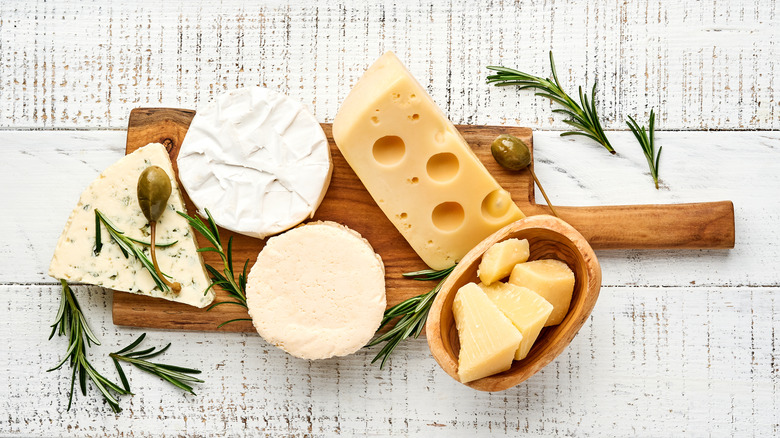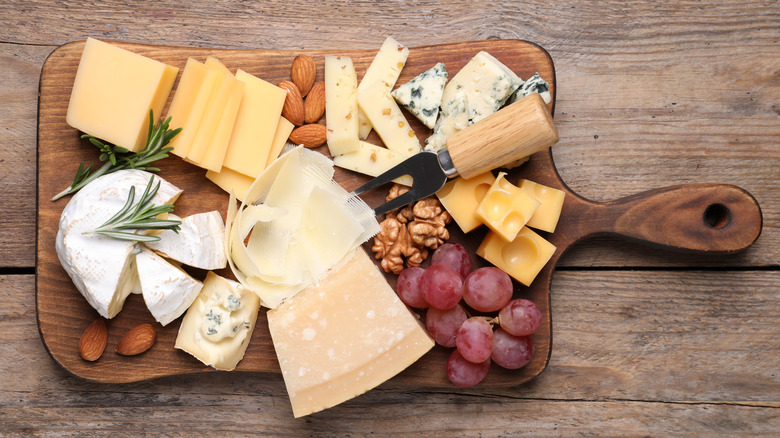The Big Mistake People Make With Cheese Boards
Those of us who love good food — and who eat dairy — tend to get pretty riled up about cheese, and for good reason. Whether it's a sharp cheddar elevating our sandwich game, a soft goat cheese lending tanginess to an asparagus tart, or a melty provolone oozing out of a grilled cheese, cheese — in all its forms — brings its richness and deliciousness to so many of the meals we whip up in the kitchen.
Of course, cheese doesn't need to be worked into a dish to be enjoyed: It's so tasty all on its own. That could explain why we're likely to reach into the fridge and gnaw on a block or slice — er, we mean, neatly cut up the finest cheeses and arrange them on a beautiful cheese board. These arrays of a selection of different cheeses are an entertaining classic, the perfect thing to set out with some crackers and glasses of wine (via Insider). But in order to create a successful cheese board, you'll want to avoid making this rookie mistake.
Don't overload your board with too many types of cheese
If you like entertaining, chances are you've served up a classic cheese board in your day. Cheese boards are a fun way to offer guests a variety of cheeses at once, and a chance to diverge from old standbys such as cheddar and Brie by presenting more unique options such as French Neufchatel and Italian burrata. But if you're planning on making one anytime soon, don't be tempted to purchase the entire cheese case at your local supermarket or specialty foods store, because when it comes to cheese boards, less is more.
Although it can be tempting to load a cheese board with eight or nine varieties of cheeses, Bon Appétit points out that it's better to edit the selections down to around four types, or perhaps five if you're expecting a large crowd. Real Simple agrees that five is a good selection and recommends 1 ounce of each.
Too many can just confuse the palate of anyone sampling the cheeses, and it's really not necessary to offer so many options; Bon Appétit suggests, instead, a solid formula of a soft, bloomy-rinded cheese such as Brillat-Savarin, a semi-hard cheese such as Gouda, and a harder, aged one such as Parmesan. It's also a good idea to look for cheeses made from differing milks, such as a mixed presentation of goat, sheep, and cow's milk cheeses.
Next time you're having people over, scale down your overloaded cheese board, and your guests will be just as delighted — if not more so.

